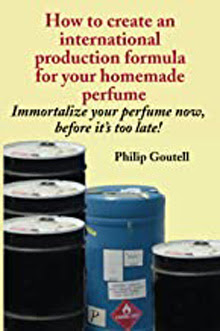Two days ago I began to explore possibilities for a new perfume. Although I could be spending more time promoting fragrances I've already created, since the summer I've been sidetracked by a project having little to do with perfume. But suddenly this week perfume was again very much on my mind. I'll tell you why.
Recently I received some unexpected compliments on a perfume I had created some time ago and then largely ignored. Positive feedback provides inspiration and I was inspired to do some new smelling. I now had a rough idea of what I wanted but I had to do some mixing and sniffing to see if my vague idea might come alive. My first try was a strike out but my second offered possibilities so I'm letting it sit for a few days to see how it evolves and whether, with some work, it might become something. As I was working and sniffing a thought came to me which I would like to share.
There is a whole world out there of glorious smells, of potential perfumes, that you will never find at any perfume counter. This near infinite world of possibilities offers you unlimited opportunities to latch onto one of these totally unclaimed smells and make it your own. Let me explain this.
There are currently available not just hundreds but thousands of odorants sold for use in perfumery. Some don't smell like much; some might even be said to stink... until they are blended with other odorants. Then magic occurs and you have a beautiful scent. Professional perfumers understand what scents can be produced by blending two or more materials. They don't have to experiment. They know from their training. The work they do produces very subtle scents such as those found in bottles at perfume counters. But there are hundreds of aroma materials out there that smell good, all by themselves, without any blending. This is the key to possibilities for you.
Explore the raw materials of perfumery: the naturals, the synthetics, the specialty bases. Single out materials that smell good by themselves. Then play with them, mixing them with other nice smelling or not so nice smelling odorants. This is not going to give you a finished perfume but it can get you started on a scent theme that will be quite different than anything currently found at perfume counters. Remember, what you find in stores, on perfume counters, is but a tiny sampling of possibilities. In fact, each of these professionally created fragrances has been assembled with multiple raw materials and simply by changing the balance of these materials a new perfume is created.
For the most part, the professionally composed fragrances you find in the market were created in response to and in competition with existing professionally created fragrances already on the market. For the most part the investors in perfume will try to find spots in the market not too far different in scent than existing fragrances, especially the successful ones.
When creating a fragrance of your own, you have two paths. You can try to imitate what has already been done, particularly that which has already been done successfully, or you can follow your own nose to beauty without reference to others.
For the less skilled and I include myself, this second path is rewarding creatively and it can be more rewarding in profit for you are now selling an original story. You are selling something that you created, that you believe in, and that you want to share with others.
Think about it.





